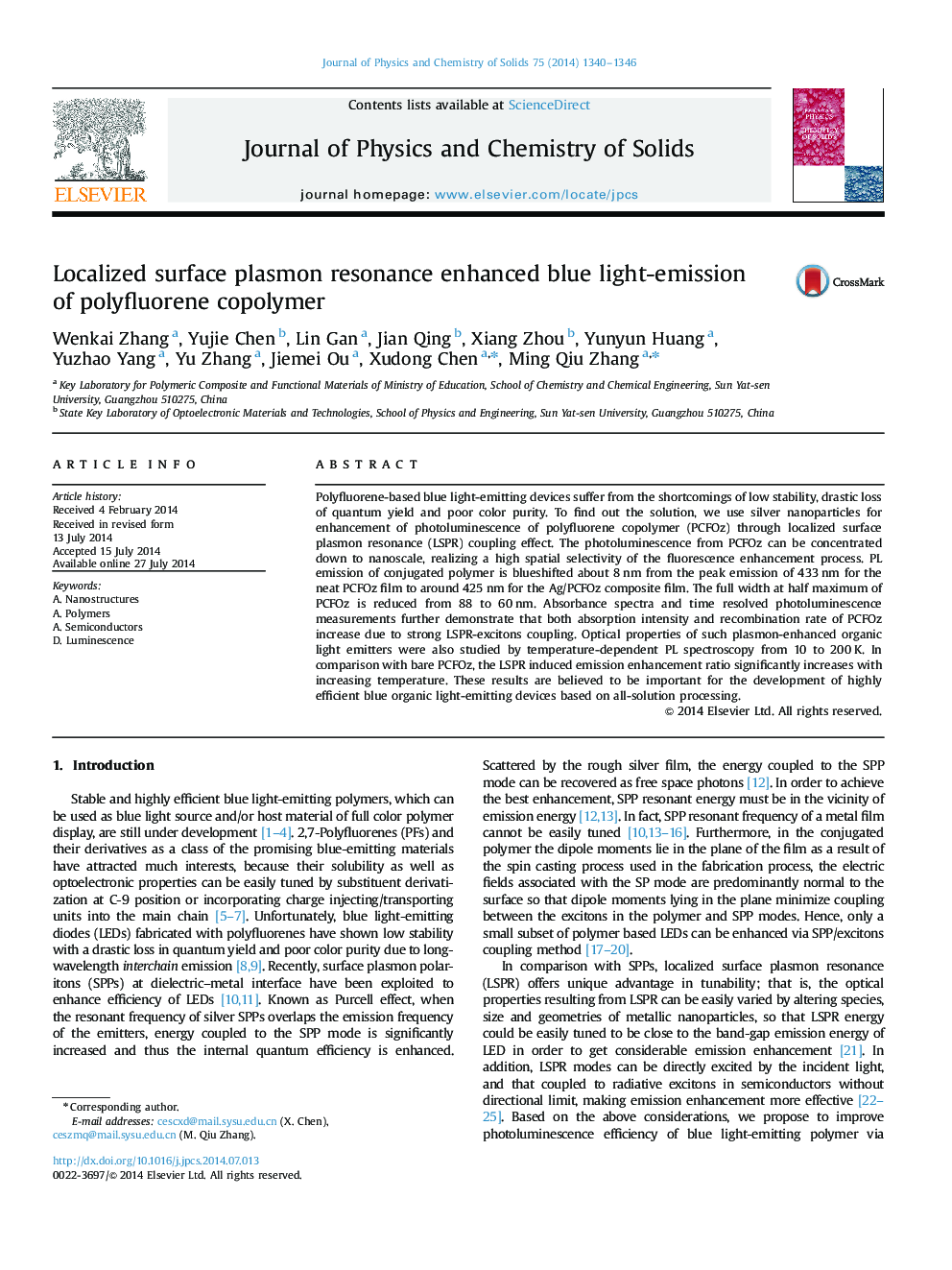| Article ID | Journal | Published Year | Pages | File Type |
|---|---|---|---|---|
| 1515645 | Journal of Physics and Chemistry of Solids | 2014 | 7 Pages |
•Emission of polyfluorene derivatives (PCFOz) is enhanced through LSPR coupling effect.•Ag/PCFOz show blueshifted narrow emission pattern due to LSPR-excitons coupling.•Both light absorption and radiative recombination rate have been enhanced.•The PL enhancement ratio increases with increasing temperature.
Polyfluorene-based blue light-emitting devices suffer from the shortcomings of low stability, drastic loss of quantum yield and poor color purity. To find out the solution, we use silver nanoparticles for enhancement of photoluminescence of polyfluorene copolymer (PCFOz) through localized surface plasmon resonance (LSPR) coupling effect. The photoluminescence from PCFOz can be concentrated down to nanoscale, realizing a high spatial selectivity of the fluorescence enhancement process. PL emission of conjugated polymer is blueshifted about 8 nm from the peak emission of 433 nm for the neat PCFOz film to around 425 nm for the Ag/PCFOz composite film. The full width at half maximum of PCFOz is reduced from 88 to 60 nm. Absorbance spectra and time resolved photoluminescence measurements further demonstrate that both absorption intensity and recombination rate of PCFOz increase due to strong LSPR-excitons coupling. Optical properties of such plasmon-enhanced organic light emitters were also studied by temperature-dependent PL spectroscopy from 10 to 200 K. In comparison with bare PCFOz, the LSPR induced emission enhancement ratio significantly increases with increasing temperature. These results are believed to be important for the development of highly efficient blue organic light-emitting devices based on all-solution processing.
Graphical abstractFigure optionsDownload full-size imageDownload as PowerPoint slide
